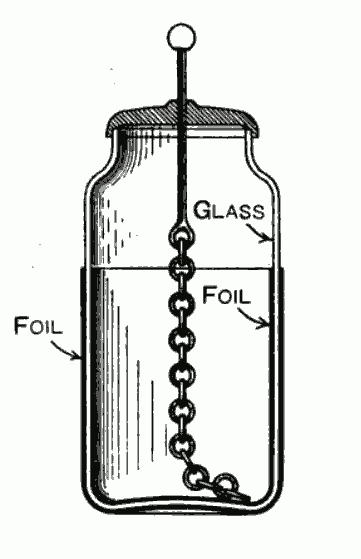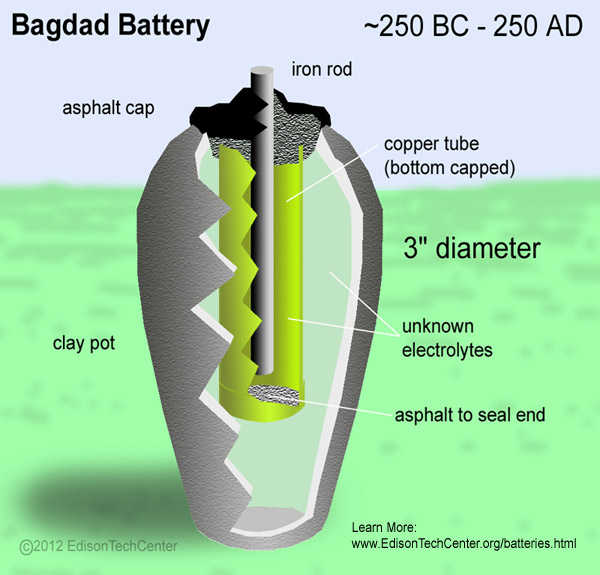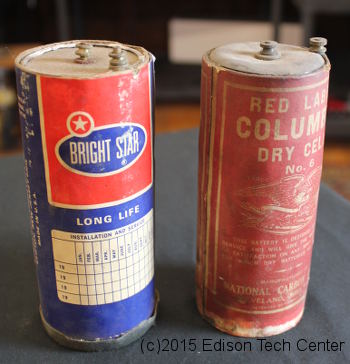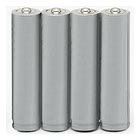Battery bible
Information for educational purpose only

The Leyden Jar
The leyden jar, named after the town Leyden in the Netherlands, is in fact not a battery but a capacitor.
It was a device that was able to store high voltages from an electrostatic generator. Although dutch the inventor, Pieter van musschenbroek is credited for this invention, the German Ewald G von Kleist. was probably the first. The added value of Van Musschenbroek was that his company was producing scientific equipment and cabinets and therefore able to distribute the “Leyden jar” to the broad public.
Generating electrostatic energy was, in 1745, for quite a while, but with the “Leyden jar” it was the first time to store this energy. This was a giant step in the evolution of electricity.

The principal operation of the Leyden Jar:
Between two metal sheets, in this case inside the jar and outside the jar, separated by glass, electrons generated from an electrostatic generator are run from the top of the Leyden jar through the chain deposited to the inside metal sheet of the jar. The jar or bottle can be filled with water or alcohol.
This is the fore runner of a capacitor where two metal plates, called conductors are put close together, separated by a non conducting material, called dielectric medium. Because electrons or current can not pass through the glass in the case of the Leyden jar, an electric circuit can be closed when there is contact between the inside (top of the jar) and outside. If, for example, a person touches the top of the jar and the side at the same time, an electric shock will be felt if the jar is charged.
When a number of “leyden jars” were put together, the name “battery” was used for the first time by Benjamin Franklin in 1749, in the same analogy as a battery in the army.
Electro chemistry:
The Lyeden jar is a capacitor storing the electrons on the metal surface. There is no chemical reaction involved.



